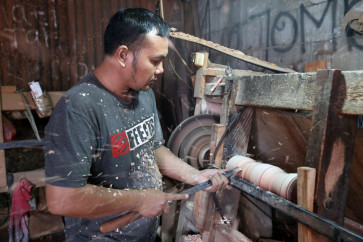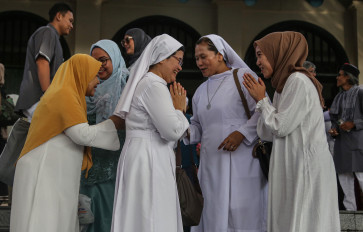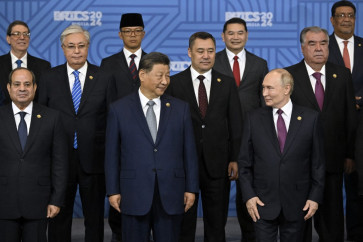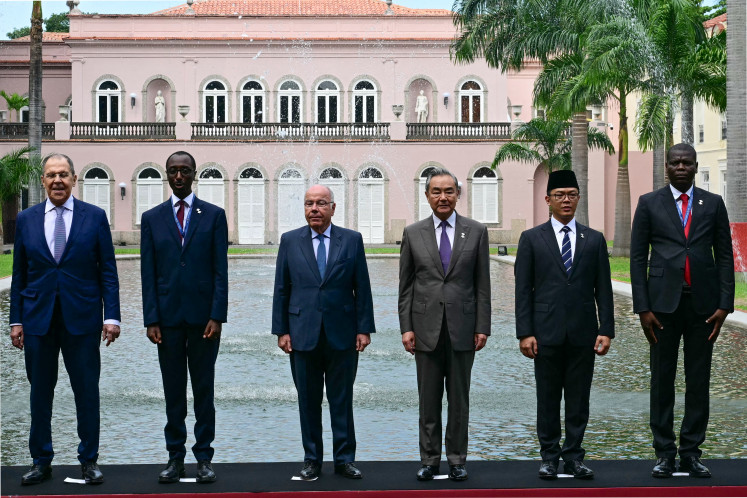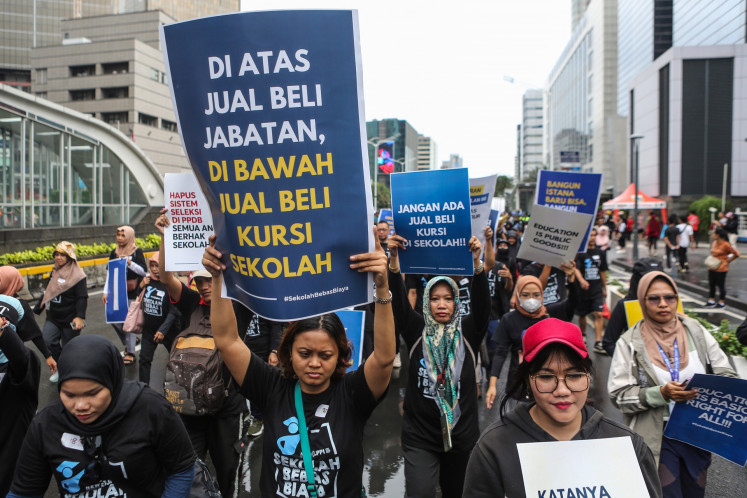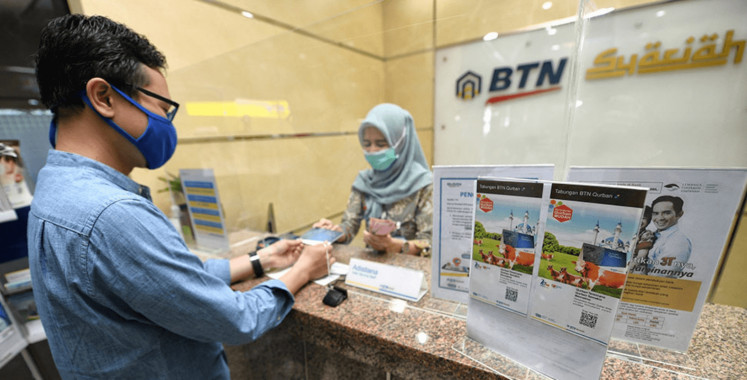Rejuvenated Gelora Bung Karno Stadium ready for Asian Games
Brand new: Construction workers are seen during the final stage of renovation of Indonesia’s largest stadium, Gelora Bung Karno Stadium, located in the Senayan Sporting Complex in Central Jakarta in late October 2017
Change text size
Gift Premium Articles
to Anyone

B
span class="caption">Brand new: Construction workers are seen during the final stage of renovation of Indonesia’s largest stadium, Gelora Bung Karno Stadium, located in the Senayan Sporting Complex in Central Jakarta in late October 2017. The stadium, which boasts the most advanced lighting system in the world, was officially reopened by President Joko “Jokowi” Widodo on Sunday. It is slated to be used for the 2018 Asian Games, which are jointly hosted by Jakarta and Palembang.(JP/Wienda Parwitasari)
Ajeng Kartika will never forget the moment she got a chance to see the 2010 AFF championship final between Indonesia and Malaysia live at the Gelora Bung Karno Stadium.
The 23-year-old flight attendant, who at the time was still in senior high school, remembers the electric atmosphere during the match, as it was her first time to be a live spectator and see the national team fight for the trophy.
“It was surreal. I cried when the national anthem was played. And the crowd was fantastic,” she recalled in a recent interview with The Jakarta Post.
A tiny problem amid all the excitement was the bench seating, which Ajeng deemed uncomfortable.
But the seat problem would cease to exist, as the newly renovated stadium, which was inaugurated by President Joko “Jokowi” Widodo on Sunday, now has single seats to comfort all spectators.
The stadium, along with other facilities at the Gelora Bung Karno sport complex, has received a facelift for the 18th Asian Games, which will be held in Jakarta and Palembang from Aug. 18 to Sept. 2 this year.
The government began the renovation projects in early August 2016, shortly after the country had been appointed as host for the multi-sport event.
With the Games only seven months away, the stadium is now ready to witness another historical event for the country. In a recent press release, the Public Works and Public Housing Ministry’s Cipta Karya Director General Sri Hartoyo said the stadium was now ready for the international event.
Hartoyo said the project had cost Rp 760 billion (US$56.8 million). After the renovation, the stadium is equipped with 76,152 single seats, down from its previous capacity of about 110,000.
“The stadium consists of 595 seats for media, 73,479 regular class seats, 132 seats reserved for people with disabilities, 725 VIP seats and 221 VVIP seats,” Sri told journalists.
The stadium now features Manila grass, which is believed to be the best type of stadium grass, and is equipped with a drainage system to prevent flooding when the rain comes.
For illumination, the stadium is equipped with a lighting system of 3,500 lux capacity, which is three times brighter than its previous lighting. A 4,000-kilowatt solar panel supports the electricity system.
“Generally, the stadium is ready,” he said.
He went on to say that renovation work on all venues at the sports complex was nearly finished, adding that his party was currently tending to the park areas of the complex.
As for maintenance, Gelora Bung Karno sport management center (PPKGBK) development director Gatot Tetuko said the management was banking on rental income from various sporting facilities for the complex to fund its own upkeep.
“We won’t receive state assistance for maintenance purposes. For example, it takes Rp 10 to 15 billion per year to maintain the aquatic stadium, while Rp 25 billion per year are required for the main stadium,” he said.
Gelora Bung Karno Stadium was built in February 1960 with a loan from the Soviet Union. The development was finished in 1962, allowing Indonesia to host the Asian Games that year.
Friedrich Silaban, the architect who is famous for having designed the National Monument (Monas) and Istiqlal Mosque, was tasked with designing the stadium, which has witnessed some historical moments, including the Games of the New Emerging Forces (Ganefo) event associated with then-president Soekarno’s protest against Western power.
Gelora Bung Karno is believed to have a similar design to the Luzhniki Stadium in Moscow, which was built in 1955, but Gelora Bung Karno has a lower seating capacity than Luzhniki Stadium, which can accommodate 81,000 spectators.

